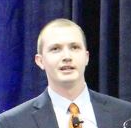Maintaining and Reconstructing In-Situ Saturations in The Permian Basin
OR
About the Course
SPWLA members, view the course for free!
SPWLA Distinguished Speaker Series. Core analysis has historically been held as the ground truth for petrophysical model calibration. With the advent of unconventional resources, vendors and operators alike have scrambled to improve and develop core analytical techniques to accurately measure the quality of these tight reservoir rocks. Fluid saturations are a critical component of this evaluation, and much effort has been made to quantify the as-received gas, water, and oil components of the pore space using Dean-Stark extraction, retort, and other complementary analyses.
While much of the focus has been on assessing the core in the condition it arrives in the lab, a key question remains: how have the fluid saturations changed as the core sample has traveled from the reservoir to the testing facility? Prior observations in the Permian Basin indicate an average of over 35% as-received air-filled porosity, suggesting that a third or more of the in-situ pore saturating fluids are never directly measured in the lab. This creates a significant uncertainty around estimation of in-place volumes and calibration of a predictive water saturation model.
Getting this analysis right is critical to one of the core tenets of a practicing petrophysicist: performing highly predictive evaluations that enable profitable and sustainable business decisions.
A Permian Basin comparison will be presented using a variety of core acquisition techniques. In this example, whole core, rotary sidewall cores, and pressurized rotary sidewall cores were each acquired over the same reservoir intervals. An experiment was designed to help mitigate fluid loss in the various methods, helping guide the petrophysicist on the reconstruction of accurate in-situ saturations. Additionally, this sampling program was designed to compare the methods in both their operational practicality and quality of core acquired.
A common assumption is that the void space at surface was previously occupied by hydrocarbon that escaped the rock due to gas expansion; this statement will be tested. Is there any water loss from in-situ to lab conditions? Can whole core or pressurized sidewall coring – with a controlled drawdown to atmospheric pressure – help maintain in-situ fluid saturations and retain oil within the rocks? Finally, does understanding this increase the predictive power of a practicing petrophysicist tasked with evaluating the productivity of unconventional reservoirs? Through detailed testing and analysis of the acquired rocks and other data, these questions are addressed.
Your Instructor

Aidan Blount is a Petrophysicist and Opportunity Advisor with Shell. He joined the company in 2013 after graduating from The University of Texas at Austin with a B.S. in Petroleum Engineering. Since joining Shell, Aidan worked on several basins as part of a regional exploration team before joining the Permian Asset in 2015. Aidan has been an active member of SPWLA over the same time period, receiving the “Best Paper” award at the 2017 Symposium and serving as an SPWLA Distinguished Lecturer.
Course Curriculum
-
PreviewPresentation Slides
-
Start1. Background & Introduction (6:25)
-
Start2. Recap and Goal for Today (3:48)
-
Start3. Permian Case Study Background & Water Problem (5:03)
-
Start4. Core Acquisition Program (4:42)
-
Start5. Fluid Recovery Results (6:08)
-
Start6. NMR Analysis (5:03)
-
Start7. Challenging Retort Fluid Loss Assumptions (3:33)
-
Start8. Summary (4:00)
